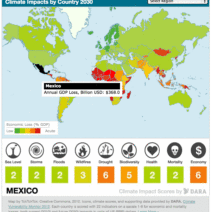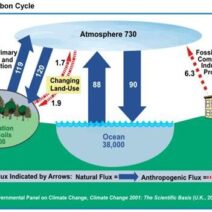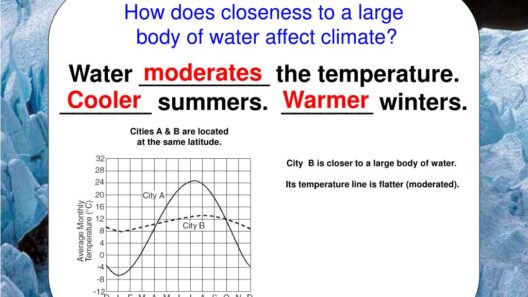Climate change, specifically global warming, is an existential threat that transcends the boundaries of mere inconvenience. As the planet’s temperature rises, so do the multifarious challenges that accompany this phenomenon. The consequences of warming are not limited to meteorological changes; they infiltrate nearly every aspect of life on Earth. Understanding the myriad dimensions of these effects is crucial for fostering a sense of urgency and responsibility toward combating climate change.
One of the most immediate consequences of global warming is the increase in frequency and intensity of extreme weather events. Hurricanes, floods, droughts, and heatwaves are becoming more prevalent, altering ecosystems and putting immense pressure on human infrastructure. For instance, warmer oceans contribute to more powerful hurricanes, resulting in greater destruction of coastal areas and displacement of communities. The severe flooding witnessed in urban areas, exacerbated by inadequate drainage systems, demonstrates how intertwined climate change is with urban development and planning.
Moreover, the changing climate poses a serious threat to global food security. Agriculture relies heavily on consistent weather patterns, and as these patterns become more erratic, crop yields are jeopardized. Prolonged droughts can lead to significant reductions in agricultural output, while increased precipitation can result in soil erosion and diminished crop quality. Such disruptions threaten not only farmers’ livelihoods but also the availability of food for populations, particularly in vulnerable regions. The stark reality is that climate change could render entire geographical areas inhospitable to traditional farming practices, necessitating a reevaluation of our agricultural paradigms.
In addition to food security concerns, global warming affects the availability of fresh water. As glaciers and snowpacks—vital sources of freshwater—continue to melt due to rising temperatures, the long-term implications for water distribution are dire. Regions that depend on glacial melt for their water supplies face impending scarcity. The repercussions of water shortages are manifold, impacting daily life, health, and local economies. In the context of climate-induced migration, communities may be forced to relocate, leading to heightened social tensions and potential conflict over dwindling resources.
Furthermore, the effects of climate change extend to human health. Higher temperatures contribute to increased incidence of heat-related illnesses, respiratory issues, and vector-borne diseases. Urban areas, often referred to as heat islands, amplify the impact of rising temperatures, endangering vulnerable populations such as the elderly and those with preexisting health conditions. As the earth warms, the range and behavior of disease-carrying organisms also shift, introducing new health risks to populations previously unaffected by such pathogens.
Addressing the implications of climate change necessitates an exploration of biodiversity loss. Warming temperatures compel species to alter their habitats, often leading to extinction for those unable to adapt. The alarming rates of species extinction endanger ecological balance and undermine the intricate web of life on which we all rely. Loss of biodiversity has cascading effects: it diminishes ecosystem services such as pollination, water purification, and carbon storage, all of which are critical for sustaining human life.
Moreover, the relationship between climate change and economic instability cannot be overlooked. The economic ramifications of natural disasters resulting from climate change are staggering. Rebuilding efforts strain national budgets, diverting funds from essential services such as education and healthcare. In developing countries, where economic resilience is already fragile, the impact of climate-change-induced disasters can precipitate a cycle of poverty that is difficult to escape. Investing in climate resilience is not just environmentally sound; it is fiscally prudent.
Transitioning to renewable energy sources offers a promising solution to mitigate the effects of global warming. However, it requires substantial investment and a monumental shift in policy and public perception. The push for wind, solar, and other sustainable energy solutions must be paired with comprehensive education to inform the populace about the feasibility and necessity of these technologies. The immediate benefits—reduction in greenhouse gas emissions, improved air quality, and job creation in green industries—should not be overshadowed by the daunting challenges posed by the transition itself.
In the face of these formidable challenges, collective action becomes paramount. Grassroots movements, driven by the voices of concerned citizens, can amplify the urgency of climate issues and demand accountability from policymakers. Advocacy for sustainable practices, legislation advocating for environmental protection, and corporate responsibility can catalyze meaningful change. Individual actions, while seemingly minor, can snowball into a larger movement, fostering community engagement and a culture of sustainability.
In conclusion, the repercussions of global warming extend far beyond rising temperatures; they weave an intricate tapestry of challenges that threaten environmental integrity, human health, and economic stability. Acknowledging the multifaceted nature of these problems is essential in galvanizing action. As we advance into an uncertain future, prioritizing sustainability and resilience in every aspect of society remains imperative. The climate crisis is not a distant threat; it is a present reality that demands immediate and sustained attention. Solving the problems precipitated by global warming requires introspection, innovation, and a commitment to nurturing our planet and its inhabitants for generations to come.




